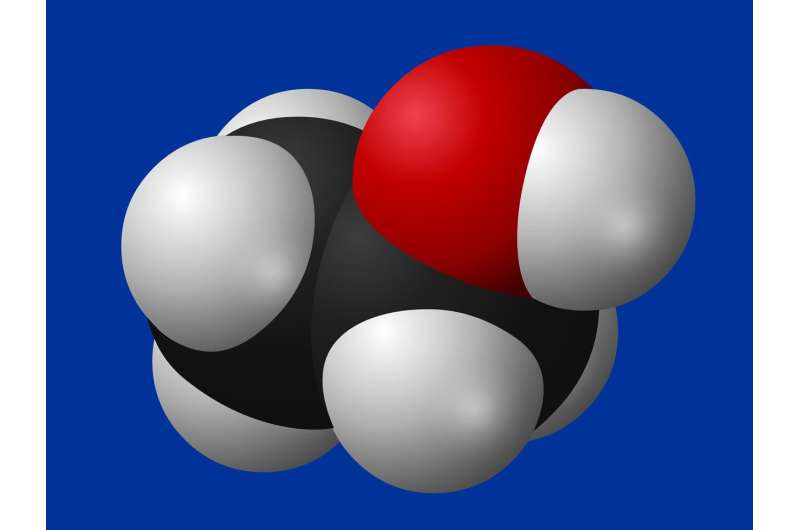This article has been reviewed according to Science X's editorial process and policies. Editors have highlighted the following attributes while ensuring the content's credibility:
fact-checked
peer-reviewed publication
trusted source
proofread
Chemists devise a method for C-H activation of alcohols

Scripps Research chemists have extended a powerful molecule-building method—called C-H activation—to the broad class of chemicals known as alcohols.
The synthetic chemistry feat, reported in Nature on September 6, 2023, follows the development of C-H activation techniques for the three other major classes of organic molecule—amines, acids and ketones—that are used to construct pharmaceuticals.
It gives chemists a versatile new toolkit for making drugs and other valuable compounds now using the alcohol chemical class; moreover, its underlying innovations suggest a general new approach to C-H activations.
"We anticipate that this strategy will be broadly applicable for transforming alcohols into useful molecules and compounds, including those that have been historically difficult to access," says study senior author Jin-Quan Yu, Ph.D., the Frank and Bertha Hupp Professor of Chemistry and Bristol Myers Squibb Endowed Chair in Chemistry at Scripps Research.
The study's co-first authors were Daniel Strassfeld, Ph.D., a postdoctoral research associate, and graduate student Chia-Yu Chen, both members of the Yu laboratory.
The organic molecules that are used to make drugs and other chemical products generally have a backbone of carbon atoms to which are bound a variety of other atoms, mostly hydrogen atoms. C-H activation involves the removal of one of these hydrogen atoms so that it can be replaced with a more complex group of atoms that confers a desired chemical property.
Over the past two decades, Yu and his laboratory have developed many innovative techniques for C-H activation at precisely controlled sites on molecules. Typically, these methods make use of small, specially designed molecules, known as ligands. The ligands take advantage of the geometry of the starting molecule to deliver a CH-bond-cleaving atom of the element palladium—known as the "catalyst"—to the desired site.
Although this approach has been successful with other major classes of starting molecules, alcohols—which include a carbon bound to an oxygen-hydrogen atom cluster called a hydroxyl group—have posed a major challenge.
"In general, alcohols do not bind to the palladium catalyst well enough for C-H cleavage to proceed," Yu says.
He and his team overcame this problem by designing ligands containing nitrogen, oxygen or sulfur atoms that can make a weak bond with the alcohol's hydroxyl group. This weak bond enhances the binding between the alcohol and the palladium catalyst.
One challenge to this design is that nitrogen, oxygen and sulfur atoms also can bind strongly to palladium, which would disrupt their ligand function. To avoid this unwanted interaction, the team positioned these atoms with precise distance and geometry within the ligand structure.
The team demonstrated their new alcohol C-H activation toolkit by transforming a variety of relatively simple alcohols into molecules that should be useful as "intermediate" compounds for making drugs, but until now have been hard to access.
Yu notes that the new method, with its use of relatively weak interactions between the ligand and the starting molecule, is comparable to the weak interactions widely used by enzymes in nature.
"This is another important example of using weak interactions to achieve otherwise impossible reactions," he says.
"H-Bond-Acceptor Ligands Enable Distal C(sp3)–H Arylation of Free Alcohols" was co-authored by Daniel Strassfeld, Chia-Yu Chen, Han Seul Park, Quang Phan and Jin-Quan Yu, all of Scripps Research.
More information: Jin-Quan Yu, Hydrogen-bond-acceptor ligands enable distal C(sp3)–H arylation of free alcohols, Nature (2023). DOI: 10.1038/s41586-023-06485-8. www.nature.com/articles/s41586-023-06485-8
Journal information: Nature
Provided by The Scripps Research Institute





















